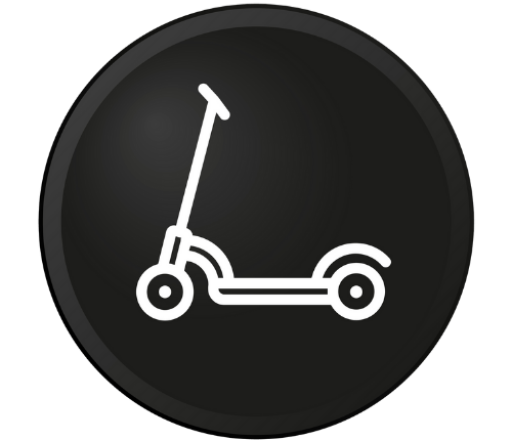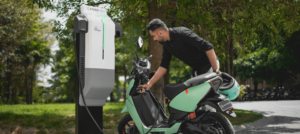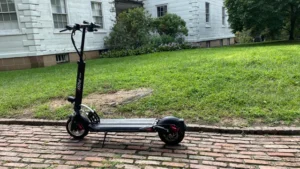Battery scooties have gained popularity as eco-friendly and convenient modes of urban transportation. However, when considering purchasing one, understanding its range and performance is essential to ensure it meets your commuting needs.
This article delves into the factors influencing battery scooty range and performance and provides guidance on choosing the right model for you.
Understanding Range
The range of a battery scooty refers to the distance it can travel on a single charge. Several factors influence a scooty’s range:
1. Battery Capacity
Battery capacity, measured in kilowatt-hours (kWh) or ampere-hours (Ah), directly impacts the scooty’s range. Generally, scooties with higher-capacity batteries can travel farther on a single charge.
2. Motor Efficiency
The efficiency of the scooty’s electric motor affects its range. High-efficiency motors convert more of the battery’s energy into motion, maximizing range.
3. Riding Conditions
Factors such as terrain, weather, and riding style can significantly impact a scooty’s range. Riding uphill, against strong winds, or at high speeds consumes more energy and reduces range.
4. Payload
The weight of the rider and any cargo carried on the scooty affects its energy consumption and, consequently, its range. Heavier loads require more energy to propel the scooty, reducing range.
Evaluating Performance
In addition to range, various performance metrics determine a battery scooty’s overall capabilities:
1. Acceleration
Acceleration measures how quickly the scooty can reach a certain speed. Models with higher power motors typically offer faster acceleration, providing a more responsive and dynamic riding experience.
2. Top Speed
The maximum speed achievable by a battery scooty varies depending on factors such as motor power, battery capacity, and regulatory restrictions. Some scooties are designed for city commuting with lower top speeds, while others offer higher speeds suitable for highways.
3. Handling and Maneuverability
Handling and maneuverability play a crucial role in a scooty’s performance, especially in urban environments with congested traffic and tight spaces. Factors such as wheelbase, suspension system, and weight distribution influence the scooty’s stability and agility.
4. Braking System
A reliable braking system is essential for safety and performance. Disc brakes provide efficient stopping power and better modulation compared to drum brakes, enhancing the scooty’s overall performance.
Choosing the Right Model
When selecting a battery scooty, consider your commuting needs, preferences, and budget:
- City Commuting: For short to medium-distance urban commuting, prioritize models with sufficient range, comfortable ergonomics, and agile handling.
- Long-Distance Travel: If you plan to travel longer distances or on highways, opt for scooties with higher-capacity batteries, faster charging capabilities, and higher top speeds.
- Terrain: Consider the terrain you’ll be riding on. If you encounter steep hills or rough roads regularly, choose a scooty with ample power and robust suspension for optimal performance.
- Budget: Balance your desired features and performance with your budget. While high-end models may offer advanced technology and superior performance, there are also affordable options that provide excellent value for money.
Conclusion
Understanding battery scooty range and performance is essential for making an informed decision when purchasing a new ride.
By considering factors such as battery capacity, motor efficiency, riding conditions, and performance metrics, you can choose a scooty that meets your needs and preferences while providing a satisfying and enjoyable riding experience.
Take the time to research and test ride different models to find the perfect battery scooty for your lifestyle and commuting requirements.



